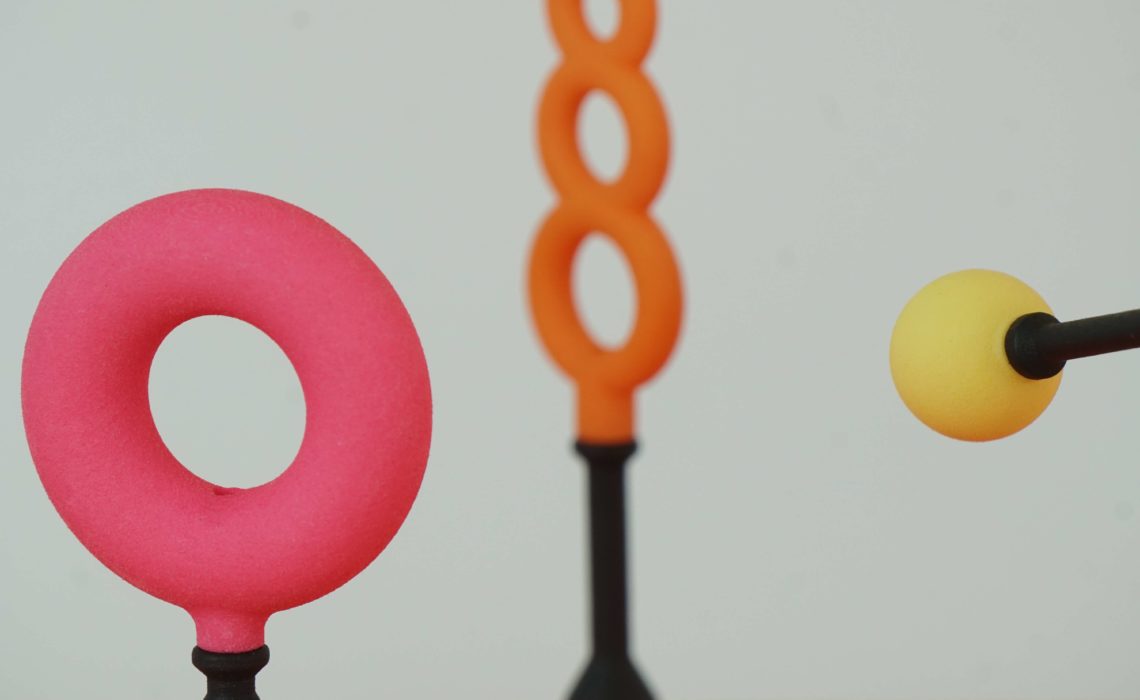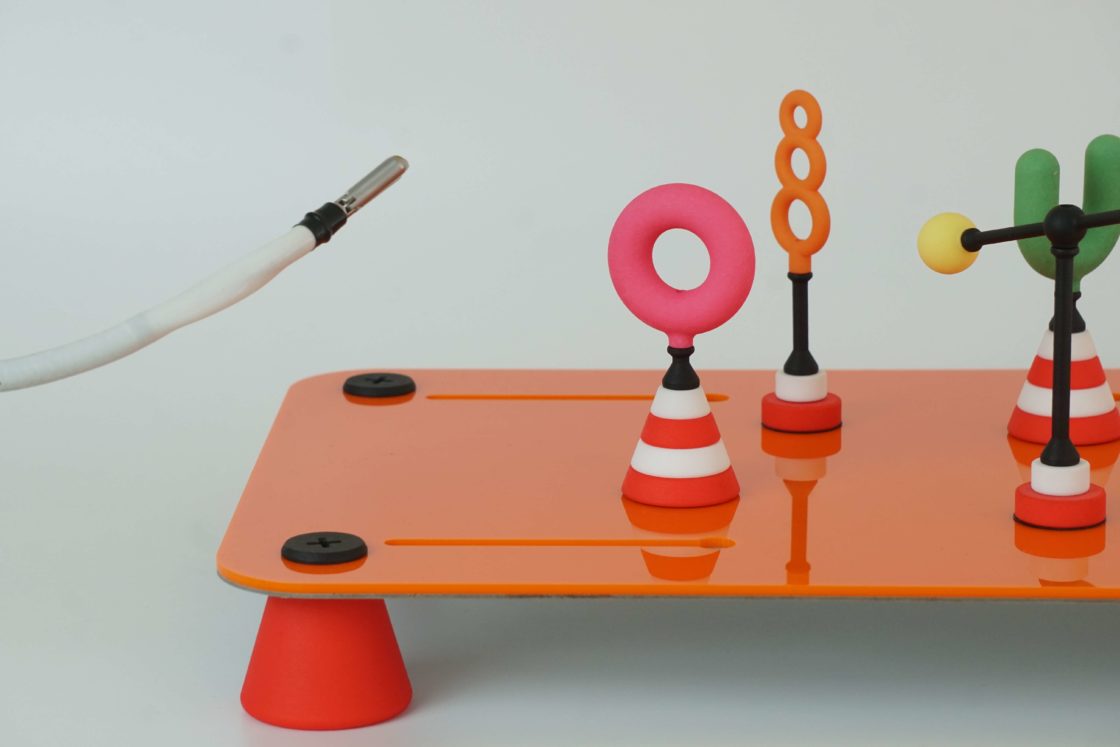
Valued at $13.84 billion in 2021, the 3D printing industry continues to expand unflaggingly, with recent statistics citing global market value growth expected at a compound annual growth rate (CAGR) of 20.8% from 2022 to 2030. For 3D printing in medical applications, market value is projected to reach $5.1 billion by 2026, expanding from $2.4 billion in 2021, at a CAGR of 16.3%.
3D printed medical devices continue to pave the way for further streamlined and improved healthcare. New advancements in 3D printing medical materials and 3D printing technology for medical applications are behind patient-specific treatment, disposing of the one-size-fit-all mentality that has ruled in manufacturing overall for so long–but especially in medicine.
3D Printed Implants Continue to Improve Quality of Life
3D printed implants have been in use since around 2007. Considering that hundreds of thousands of patients undergo orthopedic surgery each year, receiving implants for joint replacements, it comes as little surprise that 3D printed hip and knee implants were most commonly used first; however, now surgeons use 3D printed spinal implants, cranial implants, and more. The overall idea is to use biocompatible materials that encourage bone growth once the implant is inserted.
Benefits for medical professionals and hospitals include speed in production for patient-specific products, affordability, and greater control over design and manufacturing between the surgeon and 3D design experts. Patients experience better outcomes due to less time in the operating room, less chance of infection, and shortened time in the hospital. 3D printed with materials like metal or thermoplastics, medical implants are made on-demand too, decreasing traditional pressure for hospitals to keep products in inventory.

FDA Regulations on 3D Printing and Medical Devices
FDA guidelines on 3D printing medical devices are available, along with further information discussing obtaining clearance for traditional manufacturers transitioning into 3D printing as well as 3D printing post-processing FDA regulatory implications, stating:
“Certain devices generally pose very low risk to patients, and the Agency is considering whether and how it might be appropriate to provide a level of regulatory flexibility when these very low risk devices are 3D printed at a healthcare facility.”
“What constitutes a very low risk device could be informed by the device’s inherent risks and benefits, intended use, and the risks introduced by 3D printing generally and at the PoC. If devices are determined to be very low risk, this may also help determine whether certain devices can be appropriately 3D printed at the PoC. FDA is considering developing a list of important characteristics that would help identify very low-risk devices.”
Today many 3D printed, customized products fit FDA regulations on 3D printing and medical devices. This is imperative for 3D printed medical implants to avoid toxicity to the patient or rejection of a part which may be inserted into the human body surgically–including 3D printed orthopedic prosthetics, cranial implants, dental crowns, and for the creation of surgical instruments too which must ensure the ability to be properly sterilized and safe for use on humans.
3D Printed Medical Models Are Multi-Faceted Tools
The 3D printed medical model has a lot to offer for everyone. Surgeons can refer to a 3D printed model converted from a specific patient’s CT data and understand more about a brain tumor, for example. The 3D model becomes a powerful tool at that point, allowing for diagnosis of the patient and then the opportunity to create a treatment regimen.
3D printed medical models also act as effective visual aids for explaining the patient’s condition to them and their families, as well as educating them about upcoming surgical procedures. 3D models are also popular as training devices for medical students, as well as surgeons preparing for new or rare surgeries; in fact, they may practice on them for as long as possible before a procedure. The models may then also go on to serve as 3D printed operating guides in the operating room.
Shapeways recommends the following materials for 3D printed medical models:
- High Definition Full Color – One of the most exciting options for photorealistic 3D printed medical models, this material is available in ten million colors, with options available for Standard or Matte finish. Produced via Material Jetting (MJ) technology, anatomical models 3D printed with High Definition Full Color represent human organs in exacting detail. Find out more about the design guidelines for this material here.
- Multi Jet Fusion PA12 – Also suitable for 3D printing complex medical models, this versatile material 3D printed with Multi Jet Fusion offers both strength and durability—both important characteristics for parts that tend to be handled a lot over time. MFJ PA12 is available in Black and Gray, with options for Natural or Smooth finish. Find out more about the 3D printing design guidelines for MJF PA12 here.

3D Printed Prosthetics and Orthotics are More Accessible and Affordable
Early on, 3D printed prosthetic limbs and 3D printed orthotics also presented an excellent introduction–and selling point–for additive manufacturing for medical devices. Not only did this change the lives of thousands in need of limb replacement, but the innovative programs also placed a tremendous–and international–spotlight on 3D printing and its uses beyond rapid prototyping.
With organizations like e-NABLE strengthening by 2012, it quickly became apparent how 3D printing could disrupt traditional processes in manufacturing medical devices. 3D designs could be easily shared and customized, whether for patients in cities or developing countries and remote areas, and manufactured quickly and economically–in comparison to the past where patients endured life without prosthetics due to their cost-prohibitive nature, or were forced to deal with uncomfortable devices that could be difficult and time-consuming to fit, and take weeks or even months to arrive. Historically, this process was not only known to be tortuous for smaller children undergoing the difficulty of fittings, only to find that the delivery time was so delayed they had outgrown the much-anticipated prosthetics by the time they arrived.
With 3D printed prosthetics, the improved quality of life for patients today is inestimable. The ability to create a 3D printed file and share it anywhere in the world is key, but customization plays the biggest role. An arm or a leg can be 3D scanned in mere minutes, sent to a 3D printer anywhere just as quickly, and customized completely to the patient for perfect fit, comfort in wear, and expanded mobility and productivity.
Personalization is a huge incentive for patient’s to wear their prosthetics more routinely and with less self-consciousness. They can be made in an infinite number of different styles, in color, and for kids can even feature superhero themes–leading what may have previously been a source of embarrassment to transition quickly into one of pride. Once 3D prosthetic models are printed, the STL files can be kept and modified as needed; again, this is a gamechanger for kids as the models can be easily changed and 3D printed again as patients grow throughout the years or want to upgrade styles.
Patients and doctors are embracing the use of 3D printed orthotics too. Responsible for improving gait and balance, orthotics are critical to offering better support for the foot whether a patient has high or low arches. Orthotics also reduce issues like shin splints, back pain, and inflammation caused by arthritis. Like traditionally made prosthetics though, orthotics of the past were known to be expensive, leaving many patients to go without despite the physical consequences.
Introducing 3D printed orthotics is a logical choice, with benefits like speed and economy in production, plus the ability to customize these 3D printed medical devices with precise measurements and personalization. 3D printed orthotics especially can be made with exponentially greater durability but can also be modified or replaced with ease.
Shapeways recommends the following materials and technology for 3D printed orthotics and prosthetics:
- Nylon 11 [PA11(SLS)]- 3D printed with Selective Laser Sintering (SLS), this material is durable and offers good resistance to impact as well as high tensile strength. Nylon 11 [PA11(SLS)] is offered in White, with a Standard finish. Explore the design guidelines for this material further here.
- Nylon 12 [Versatile Plastic] – Also relying on SLS 3D printing, this material is extremely durable and adaptable, whether parts require rigidity or flexibility. Nylon 12 [Versatile Plastic] is available for dyeing in eight different colors with a variety of finishes ranging from Standard to Premium and Smooth. Explore the design guidelines for this material further here.
- Multi Jet Fusion PA12 – Also suitable for prosthetics and orthotics, this versatile material 3D printed with Multi Jet Fusion offers strength and durability—both important characteristics for parts that tend to be handled a lot over time. MFJ PA12 is available in Black and Gray, with either the Natural or Smooth finish. Find out more about the design guidelines for MJF PA12 here.

3D Printed Surgical Tools Empower Medical Professionals
With 3D printing directing patient-specific care, everyone is empowered–from the patients who must no longer struggle in a world of generic medical products–to surgeons who can now rely on tools that match the materials being used and the techniques being performed. 3D printed implants offer huge advancements in medicine, but even more so when accompanied by 3D printed surgical tools specific to the products being used and the doctor’s preference.
Examples of typical 3D printed surgical tools include:
- Clamps
- Forceps
- Handles for scalpels
- Hemostats
- Needle drivers
- Surgical trays
Shapeways recommends the following materials for 3D printed surgical guides and tools:
- Nylon 12 [Versatile Plastic] – Used with SLS technology to make strong 3D printed surgical guides and tools, this material is very popular in a wide range of applications due to its ability to be flexible for thinner parts while stiff for thicker parts and prototypes. Explore the design guidelines for this material further here.
- Stainless Steel 316L – Suitable for surgical tools, this industrial metal is corrosion-resistant and extremely strong, used with binder jetting technology. Explore the design guidelines for this material further here.
About Shapeways
Enjoy the benefits of this advanced technology and a wide range of materials from Shapeways for 3D printing your creations with accuracy, complex detail, and no minimum or limits in terms of mass customization or single part orders. Shapeways has worked with over 1 million customers in 160 countries to 3D print over 21 million parts! Read about case studies, find out more about Shapeways additive manufacturing solutions, and get instant quotes here.


